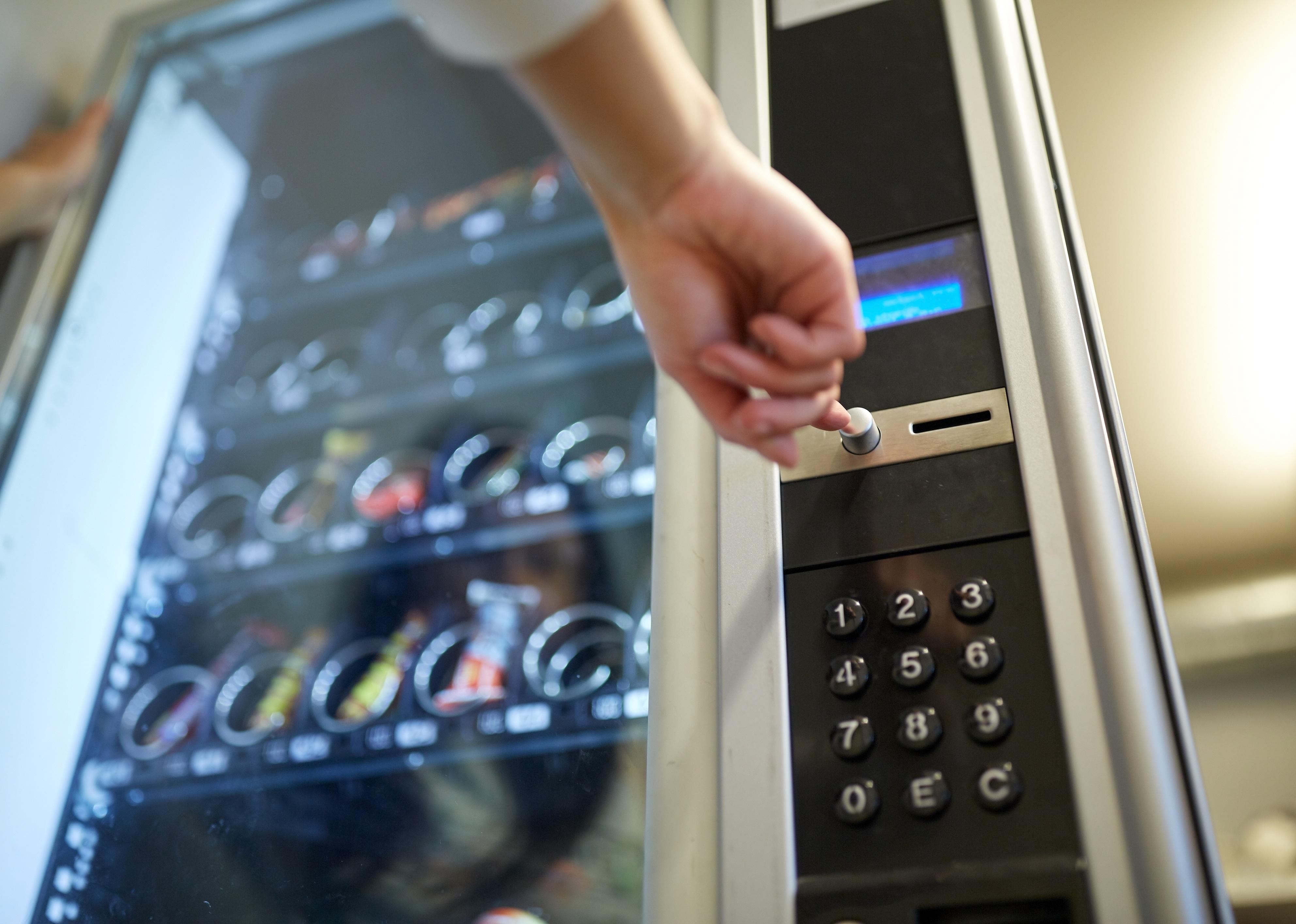Business
10 side hustles you can launch yourself
Published
11 months agoon

Looking for ways to make a little extra cash? Whether you’re saving for a particular goal or just trying to combat inflation, taking on a side hustle alongside your day job can help put a little more money in the bank.
Vending Mavericks highlighted 10 side hustles people could start on their own at a relatively low cost, including those involving skill or mastery and others that can be done without.
Hustle culture is prevalent throughout American culture—showing up in our TV, movies, social media, and everyday lives. If you’re ready to hit the grind, remember that not all side jobs are created equal. Some require more upfront investment than others.
While the jobs on this list cost little to start, you may need various skills, tools, and resources—access to reliable transportation, for instance. Be sure to do an audit of the resources at your disposal before deciding which side hustle is best for you.
This kind of work is on the rise: 2022 Census Bureau data showed about 27.1 million nonemployer business establishments nationwide in 2019. Following a period of record business applications, that number is likely higher now. Check out these options if you’re ready to jump on the trend.
![]()
Casimiro PT // Shutterstock
Open an Etsy shop
Are you crafty? Do you crochet in your spare time or dabble with digital design? Try turning your hobby into cash by opening an Etsy shop.
It only takes a few minutes to start selling on Etsy. Listings cost $0.20, and you’ll also be charged a 6.5% transaction fee and payment processing fee of 3% plus $0.25. If you want to advertise your listing beyond Etsy, you’ll also need to pay a 15% fee for offsite ads.
These fees can add up quickly, so consider this in tandem with labor time and the cost of materials when setting prices.
localcinema // Shutterstock
Sell goods at markets, fairs, and festivals
Another option for making some cash off your creativity is to sell your products at markets, fairs, or festivals.
Start by doing a search for markets and fairs in your area. Most major sites will have an application page with a list of the kinds of businesses they feature and the requirements to score a spot. For instance, the Texas Farmers Market currently warns that the wait list is long for those selling sweet confections.
You might still be subject to fees with this option, but it’s possible they’ll be less than an online vendor like Etsy. Additionally, ensure you don’t need any specific license to qualify—especially if you’re selling food. Requirements vary by state.
antoniodiaz // Shutterstock
Sign up for rideshare and delivery
If you have access to reliable transportation, you could also consider signing up for a ride-share or delivery service. Both Uber and Lyft have specific vehicle requirements you must meet to be eligible to carry passengers.
The major benefit of this side hustle is that you can make as much out of it as you are willing to put in. Services like DoorDash, Uber Eats, Gopuff, and more allow drivers to set their schedules. You’ll typically earn money in the form of a base fare, tips, and special promotions during peak delivery times.
a katz // Shutterstock
Walk dogs
Did you know animal lovers can earn cash just by hanging out with pets? Services like Rover and Wag! allow you to sign up to walk dogs, cat-sit, or provide other pet-related services on your own time and at your own rate.
To set yourself up for success on these platforms, be sure to do your research on the going rate for other sitters in your area. If you set prices too high, you might not get as many hits on your listing; too low, and you aren’t making as much as you’re worth.
Krakenimages.com // Shutterstock
Clean homes
Cleaning homes is another great option for bringing in extra income. Hourly rates for maid services range between $9 and $16 on average, but you could bring in more in the right area.
There are a couple of ways to get started cleaning homes. You could work independently, marketing and finding clients via social media, neighborhood groups, or friends and family. Or you could sign up to work with a national service to get access to extra benefits, including transportation and cleaning supplies.
Ivan Kruk // Shutterstock
Perform errands, maintenance, and repairs
Are you a whiz at assembling Ikea furniture? Looking for a way to combine earning extra money with getting a workout? Advertising services like assisting with moves, running errands, or helping with repairs on a site like TaskRabbit could be for you.
When you sign up to become a Tasker, the site will give you the going rate for someone providing that particular service in your area. For instance, help moving in Austin, Texas, is currently worth about $51 per hour. You have the power to adjust these rates as you get more experience and feel more confident with your ability to score work.
The best part? After a $25 registration fee, you’ll keep 100% of your service fees and tips. There’s no listing or transaction fee for Taskers.
GaudiLab // Shutterstock
Freelance
Nearly 2 in 5 Americans provided freelance work in 2022. Those skilled in writing, editing, photography, and other in-demand work can take on additional jobs at almost no cost. Most of the time, you’ll just need a computer, internet connection, and whatever software and equipment you already use for these purposes—like cameras and lighting.
Freelance opportunities abound if you do the work to find them. Tap your network on LinkedIn, check out job boards on Indeed or Glassdoor, or sign up for an aggregator site like Fiverr or Upwork. Each of these options has pros and cons: Tapping your own network requires a bit of extra searching on your part, but you won’t have to pay the service fees associated with aggregator sites, and vice versa.
Ground Picture // Shutterstock
Operate a vending machine
Ever bought a candy bar at the laundromat and wondered where the money went? In many cases, people own and operate their own vending machines at a steep profit.
Operating a vending machine requires more upfront investment than other side hustles on this list. You’ll have to invest in the machine itself, which could be anywhere from a few hundred dollars for a used machine to a few thousand for a new one. You’ll also need to cover the cost of stock to fill it up.
Then, find the right place for your machine, and contact that business owner. This might be a school, shopping mall, laundromat, or other local business. Some owners will charge you a percentage of the profits for the space, while others might charge fixed fees or apply no fees. You also might have to secure a vending license.
Lucky Business // Shutterstock
Teach a class in something you’re good at
Though typically reserved for specialists in a given field, teaching a class is another great way to use your knowledge to earn extra income. For those with in-demand certifications and expertise, you might be able to teach via online learning platforms like Udemy or Coursera.
If you have an advanced degree, you also might be qualified to teach a course at your local community college. Adjunct professor salaries vary significantly by state and metro area but average more than $26 an hour.
DC Studio // Shutterstock
Create media
Digital content creation is a booming industry. From independent blogs to YouTube channels or TikTok accounts, content creators leverage brand partnerships, advertising, and more to bring in thousands annually.
Growing a following on a major social platform can take time and investment, however. You’ll need to make sure you have all the best editing software, filming equipment, and other tools needed to create your particular brand of media. You’ll also need to be well-versed in selling yourself when it comes to landing partnerships and setting rates. But the biggest factor is time. The more your audience grows, the more brands will be interested in partnering with you.
Data reporting by Paxtyn Merten. Story editing by Jeff Inglis. Copy editing by Paris Close. Photo selection by Clarese Moller.
This story originally appeared on Vending Mavericks and was produced and
distributed in partnership with Stacker Studio.
Founded in 2017, Stacker combines data analysis with rich editorial context, drawing on authoritative sources and subject matter experts to drive storytelling.
You may like

It’s well-documented that the surest, and often best, return on investments comes from playing the long game. But between stocks and real estate, which is the stronger bet?
To find out, financial planning firm Wealth Enhancement Group analyzed data from academic research, Standard and Poor’s, and Nareit to see how real estate compares to stocks as an investment.
Data going back to 1870 shows the well-established power of real estate as a powerful “long-run investment.” From 1870-2015, and after adjusting for inflation, real estate produced an average annual return of 7.05%, compared to 6.89% for equities. These findings, published in the 2019 issue of The Quarterly Journal of Economics, illustrate that stocks can deviate as much as 22% from their average, while housing only spreads out 10%. That’s because despite having comparable returns, stocks are inherently more volatile due to following the whims of the business cycle.
Real estate has inherent benefits, from unlocking cash flow and offering tax breaks to building equity and protecting investors from inflation. Investments here also help to diversify a portfolio, whether via physical properties or a real estate investment trust. Investors can track markets with standard resources that include the S&P CoreLogic Case-Shiller Home Price Indices, which tracks residential real estate prices; the Nareit U.S. Real Estate Index, which gathers data on the real estate investment trust, or REIT, industry; and the S&P 500, which tracks the stocks of 500 of the largest companies in the U.S.
High interest rates and a competitive market dampened the flurry of real-estate investments made in the last four years. The rise in interest rates equates to a bigger borrowing cost for investors, which can spell big reductions in profit margins. That, combined with the risk of high vacancies, difficult tenants, or hidden structural problems, can make real estate investing a less attractive option—especially for first-time investors.
Keep reading to learn more about whether real estate is a good investment today and how it stacks up against the stock market.
![]()

Wealth Enhancement Group
Stocks and housing have both done well
REITs can offer investors the stability of real estate returns without bidding wars or hefty down payments. A hybrid model of stocks and real estate, REITs allow the average person to invest in businesses that finance or own income-generating properties.
REITs delivered slightly better returns than the S&P 500 over the past 20-, 25-, and 50-year blocks. However, in the short term—the last 10 years, for instance—stocks outperformed REITs with a 12% return versus 9.5%, according to data compiled by The Motley Fool investor publication.
Whether a new normal is emerging that stocks will continue to offer higher REITs remains to be seen.
This year, the S&P 500 reached an all-time high, courtesy of investor enthusiasm in speculative tech such as artificial intelligence. However, just seven tech companies, dubbed “The Magnificent 7,” are responsible for an outsized amount of the S&P’s returns last year, creating worry that there may be a tech bubble.
While indexes keep a pulse on investment performance, they don’t always tell the whole story. The Case-Shiller Index only measures housing prices, for example, which leaves out rental income (profit) or maintenance costs (loss) when calculating the return on residential real estate investment.

Wealth Enhancement Group
Housing returns have been strong globally too
Like its American peers, the global real estate market in industrialized nations offers comparable returns to the international stock market.
Over the long term, returns on stocks in industrialized nations is 7%, including dividends, and 7.2% in global real estate, including rental income some investors receive from properties. Investing internationally may have more risk for American buyers, who are less likely to know local rules and regulations in foreign countries; however, global markets may offer opportunities for a higher return. For instance, Portugal’s real estate market is booming due to international visitors deciding to move there for a better quality of life. Portugal’s housing offers a 6.3% return in the long term, versus only 4.3% for its stock market.
For those with deep enough pockets to stay in, investing in housing will almost always bear out as long as the buyer has enough equity to manage unforeseen expenses and wait out vacancies or slumps in the market. Real estate promises to appreciate over the long term, offers an opportunity to collect rent for income, and allows investors to leverage borrowed capital to increase additional returns on investment.
Above all, though, the diversification of assets is the surest way to guarantee a strong return on investments. Spreading investments across different assets increases potential returns and mitigates risk.
Story editing by Nicole Caldwell. Copy editing by Paris Close. Photo selection by Lacy Kerrick.
This story originally appeared on Wealth Enhancement Group and was produced and
distributed in partnership with Stacker Studio.
Founded in 2017, Stacker combines data analysis with rich editorial context, drawing on authoritative sources and subject matter experts to drive storytelling.
Business
5 tech advancements sports venues have added since your last event
Published
6 days agoon
April 19, 2024
In today’s digital climate, consuming sports has never been easier. Thanks to a plethora of streaming sites, alternative broadcasts, and advancements to home entertainment systems, the average fan has myriad options to watch and learn about their favorite teams at the touch of a button—all without ever having to leave the couch.
As a result, more and more sports venues have committed to improving and modernizing their facilities and fan experiences to compete with at-home audiences. Consider using mobile ticketing and parking passes, self-service kiosks for entry and ordering food, enhanced video boards, and jumbotrons that supply data analytics and high-definition replays. These innovations and upgrades are meant to draw more revenue and attract various sponsored partners. They also deliver unique and convenient in-person experiences that rival and outmatch traditional ways of enjoying games.
In Los Angeles, the Rams and Chargers’ SoFi Stadium has become the gold standard for football venues. It’s an architectural wonder with closer views, enhanced hospitality, and a translucent roof that cools the stadium’s internal temperature.
The Texas Rangers’ ballpark, Globe Life Field, added field-level suites and lounges that resemble the look and feel of a sports bar. Meanwhile, the Los Angeles Clippers are building a new arena (in addition to retail space, team offices, and an outdoor public plaza) that will seat 18,000 people and feature a fan section called The Wall, which will regulate attire and rooting interest.
It’s no longer acceptable to operate with old-school facilities and technology. Just look at Commanders Field (formerly FedExField), home of the Washington Commanders, which has faced criticism for its faulty barriers, leaking ceilings, poor food options, and long lines. Understandably, the team has been attempting to find a new location to build a state-of-the-art stadium and keep up with the demand for high-end amenities.
As more organizations audit their stadiums and arenas and keep up with technological innovations, Uniqode compiled a list of the latest tech advancements to coax—and keep—fans inside venues.
![]()
Jeff Gritchen/MediaNews Group/Orange County Register // Getty Images
Just Walk Out technology
After successfully installing its first cashierless grocery store in 2020, Amazon has continued to put its tracking technology into practice.
In 2023, the Seahawks incorporated Just Walk Out technology at various merchandise stores throughout Lumen Field, allowing fans to purchase items with a swipe and scan of their palms.
The radio-frequency identification system, which involves overhead cameras and computer vision, is a substitute for cashiers and eliminates long lines.
RFID is now found in a handful of stadiums and arenas nationwide. These stores have already curbed checkout wait times, eliminated theft, and freed up workers to assist shoppers, according to Jon Jenkins, vice president of Just Walk Out tech.
Billie Weiss/Boston Red Sox // Getty Images
Self-serve kiosks
In the same vein as Amazon’s self-scanning technology, self-serve kiosks have become a more integrated part of professional stadiums and arenas over the last few years. Some of these function as top-tier vending machines with canned beers and nonalcoholic drinks, shuffling lines quicker with virtual bartenders capable of spinning cocktails and mixed drinks.
The kiosks extend past beverages, as many college and professional venues have started using them to scan printed and digital tickets for more efficient entrance. It’s an effort to cut down lines and limit the more tedious aspects of in-person attendance, and it’s led various competing kiosk brands to provide their specific conveniences.
Kyle Rivas // Getty Images
Mobile ordering
Is there anything worse than navigating the concourse for food and alcohol and subsequently missing a go-ahead home run, clutch double play, or diving catch?
Within the last few years, more stadiums have eliminated those worries thanks to contactless mobile ordering. Fans can select food and drink items online on their phones to be delivered right to their seats. Nearly half of consumers said mobile app ordering would influence them to make more restaurant purchases, according to a 2020 study at PYMNTS. Another study showed a 22% increase in order size.
Many venues, including Yankee Stadium, have taken notice and now offer personalized deliveries in certain sections and established mobile order pick-up zones throughout the ballpark.
Darrian Traynor // Getty Images
QR codes at seats
Need to remember a player’s name? Want to look up an opponent’s statistics at halftime? The team at Digital Seat Media has you covered.
Thus far, the company has added seat tags to more than 50 venues—including two NFL stadiums—with QR codes to promote more engagement with the product on the field. After scanning the code, fans can access augmented reality features, look up rosters and scores, participate in sponsorship integrations, and answer fan polls on the mobile platform.
Boris Streubel/Getty Images for DFL // Getty Images
Real-time data analytics and generative AI
As more venues look to reinvigorate the in-stadium experience, some have started using generative artificial intelligence and real-time data analytics. Though not used widely yet, generative AI tools can create new content—text, imagery, or music—in conjunction with the game, providing updates, instant replays, and location-based dining suggestions
Last year, the Masters golf tournament even began including AI score projections in its mobile app. Real-time data is streamlining various stadium pitfalls, allowing operation managers to monitor staffing issues at busy food spots, adjust parking flows, and alert custodians to dirty or damaged bathrooms. The data also helps with security measures. Open up an app at a venue like the Honda Center in Anaheim, California, and report safety issues or belligerent fans to help better target disruptions and preserve an enjoyable experience.
Story editing by Nicole Caldwell. Copy editing by Paris Close. Photo selection by Lacy Kerrick.
This story originally appeared on Uniqode and was produced and
distributed in partnership with Stacker Studio.
Founded in 2017, Stacker combines data analysis with rich editorial context, drawing on authoritative sources and subject matter experts to drive storytelling.
Business
Import costs in these industries are keeping prices high
Published
2 weeks agoon
April 11, 2024
Inflation has cooled substantially, but Americans are still feeling the strain of sky-high prices. Consumers have to spend more on the same products, from the grocery store to the gas pump, than ever before.
Increased import costs are part of the problem. The U.S. is the largest goods importer in the world, bringing in $3.2 trillion in 2022. Import costs rose dramatically in 2021 and 2022 due to shipping constraints, world events, and other supply chain interruptions and cost pressures. At the June 2022 peak, import costs for all commodities were up 18.6% compared to January 2020.
While import costs have since fallen most months—helping to lower inflation—they remain nearly 12% above what they were in 2020. And beginning in 2024, import costs began to rise again, with January seeing the highest one-month increase since March 2022.
Machinery Partner used Bureau of Labor Statistics data to identify the soaring import costs that have translated to higher costs for Americans. Imports in a few industries have had an outsized impact, helping drive some of the overall spikes. Crop production, primary metal manufacturing, petroleum and coal product manufacturing, and oil and gas extraction were the worst offenders, with costs for each industry remaining at least 20% above 2020.
![]()

Machinery Partner
Imports related to crops, oil, and metals are keeping costs up
At the mid-2022 peak, import costs related to oil, gas, petroleum, and coal products had the highest increases, doubling their pre-pandemic costs. Oil prices went up globally as leaders anticipated supply disruptions from the conflict in Ukraine. The U.S. and other allied countries put limits on Russian revenues from oil sales through a price cap of oil, gas, and coal from the country, which was enacted in 2022.
This activity around the world’s second-largest oil producer pushed prices up throughout the market and intensified fluctuations in crude oil prices. Previously, the U.S. had imported hundreds of thousands of oil barrels from Russia per day, making the country a leading source of U.S. oil. In turn, the ban affected costs in the U.S. beyond what occurred in the global economy.
Americans felt this at the pump—with gasoline prices surging 60% for consumers year-over-year in June 2022 and remaining elevated to this day—but also throughout the economy, as the entire supply chain has dealt with higher gas, oil, and coal prices.
Some of the pressure from petroleum and oil has shifted to new industries: crop production and primary metal manufacturing. In each of these sectors, import costs in January were up about 40% from 2020.
Primary metal manufacturing experienced record import price growth in 2021, which continued into early 2022. The subsequent monthly and yearly drops have not been substantial enough to bring costs down to pre-COVID levels. Bureau of Labor Statistics reporting shows that increasing alumina and aluminum production prices had the most significant influence on primary metal import prices. Aluminum is widely used in consumer products, from cars and parts to canned beverages, which in turn inflated rapidly.
Aluminum was in short supply in early 2022 after high energy costs—i.e., gas—led to production cuts in Europe, driving aluminum prices to a 13-year high. The U.S. also imposes tariffs on aluminum imports, which were implemented in 2018 to cut down on overcapacity and promote U.S. aluminum production. Suppliers, including Canada, Mexico, and European Union countries, have exemptions, but the tax still adds cost to imports.
U.S. agricultural imports have expanded in recent decades, with most products coming from Canada, Mexico, the EU, and South America. Common agricultural imports include fruits and vegetables—especially those that are tropical or out-of-season—as well as nuts, coffee, spices, and beverages. Turmoil with Russia was again a large contributor to cost increases in agricultural trade, alongside extreme weather events and disruptions in the supply chain. Americans felt these price hikes directly at the grocery store.
The U.S. imports significantly more than it exports, and added costs to those imports are felt far beyond its ports. If import prices continue to rise, overall inflation would likely follow, pushing already high prices even further for American consumers.
Story editing by Shannon Luders-Manuel. Copy editing by Kristen Wegrzyn.
This story originally appeared on Machinery Partner and was produced and
distributed in partnership with Stacker Studio.
Founded in 2017, Stacker combines data analysis with rich editorial context, drawing on authoritative sources and subject matter experts to drive storytelling.
Featured
-

 Business5 months ago
Business5 months agomesh conference goes deep on AI, with experts focusing in on training, ethics, and risk
-

 Business4 months ago
Business4 months agoSkill-based hiring is the answer to labour shortages, BCG report finds
-

 Events6 months ago
Events6 months agoTop 5 tech and digital transformation events to wrap up 2023
-

 People4 months ago
People4 months agoHow connected technologies trim rework and boost worker safety in hands-on industries
-

 Events3 months ago
Events3 months agoThe Northern Lights Technology & Innovation Forum comes to Calgary next month
















